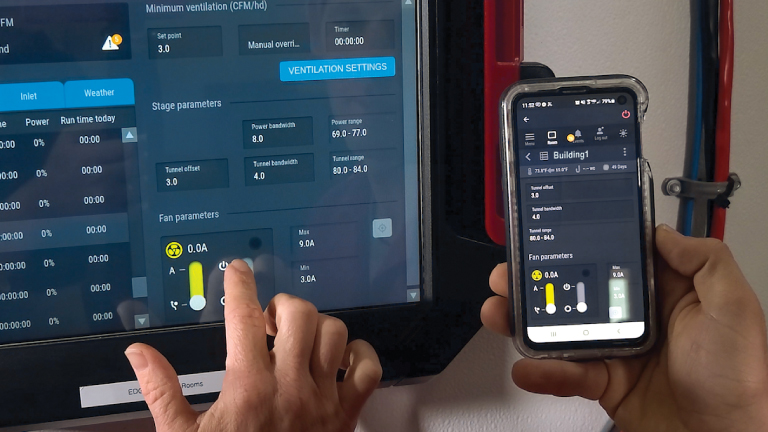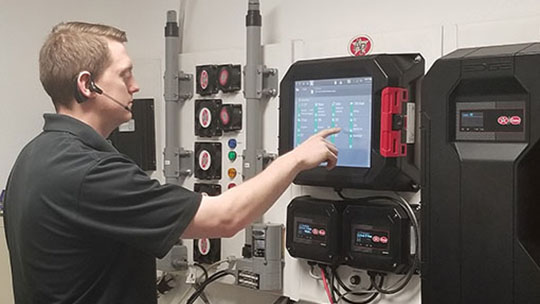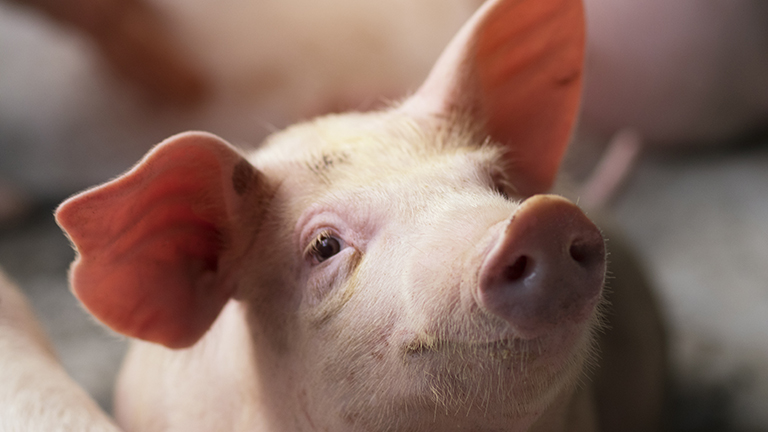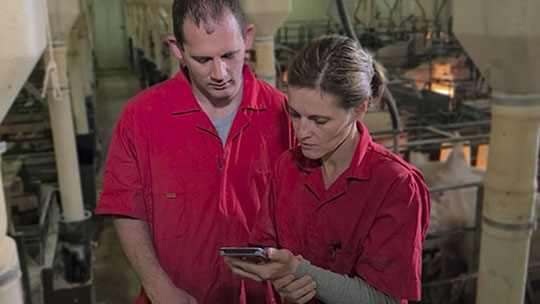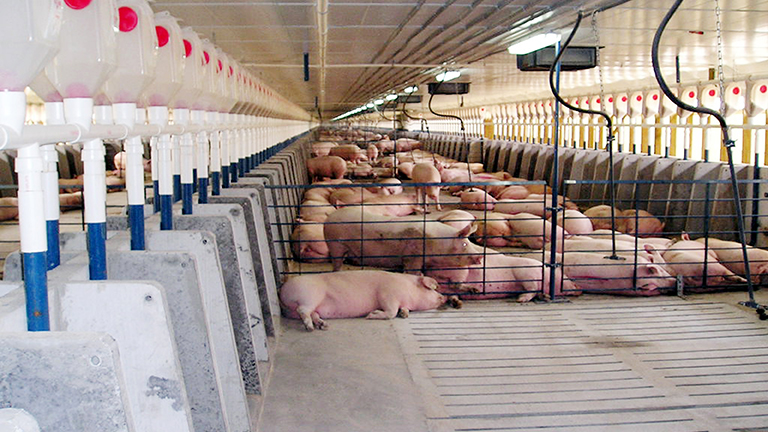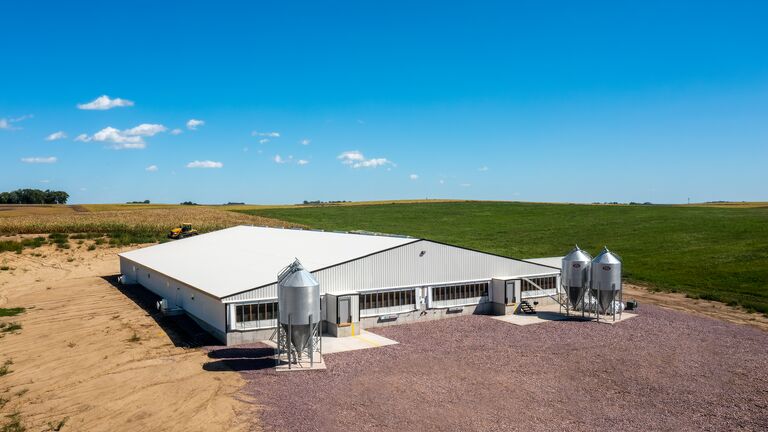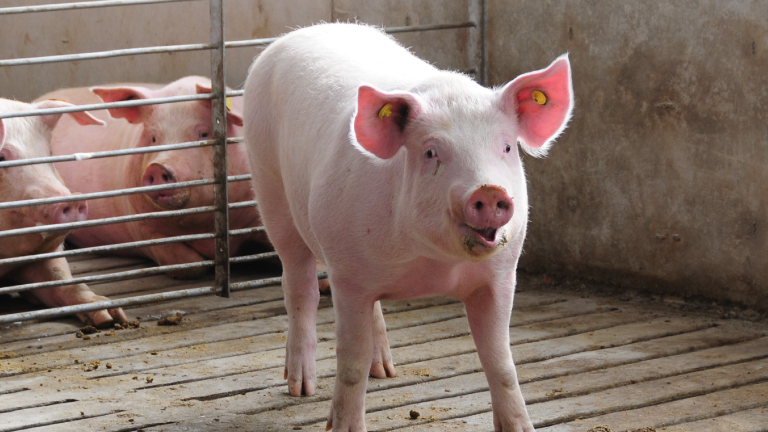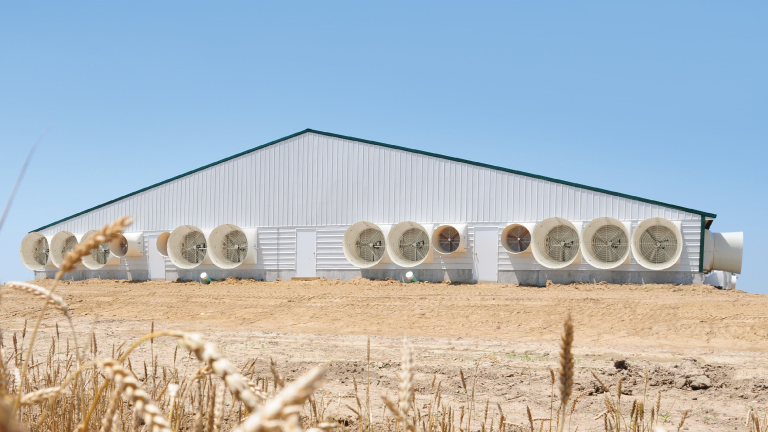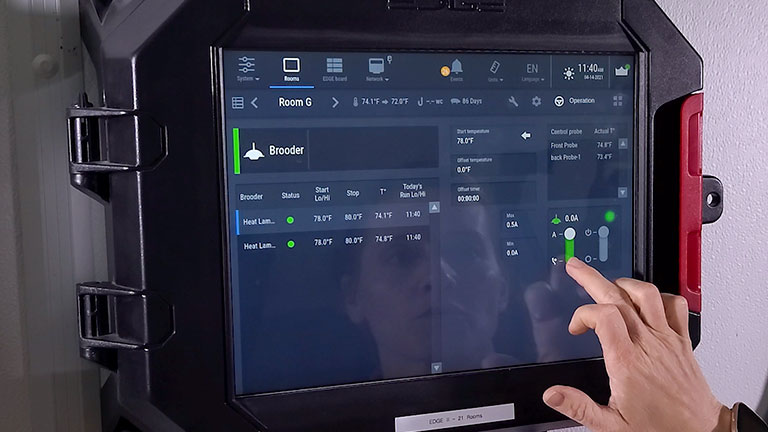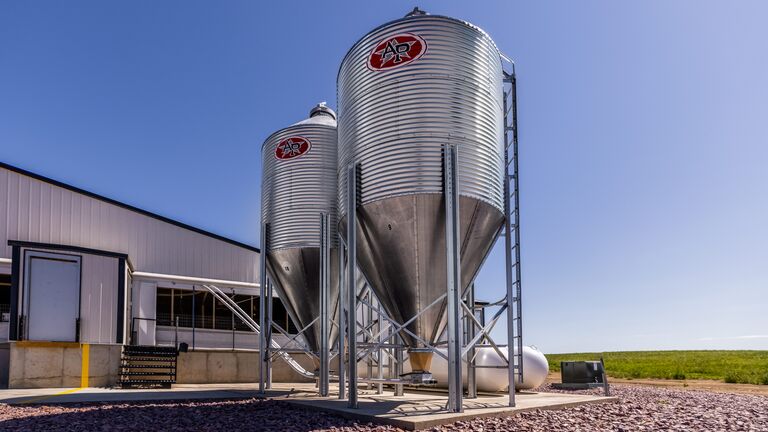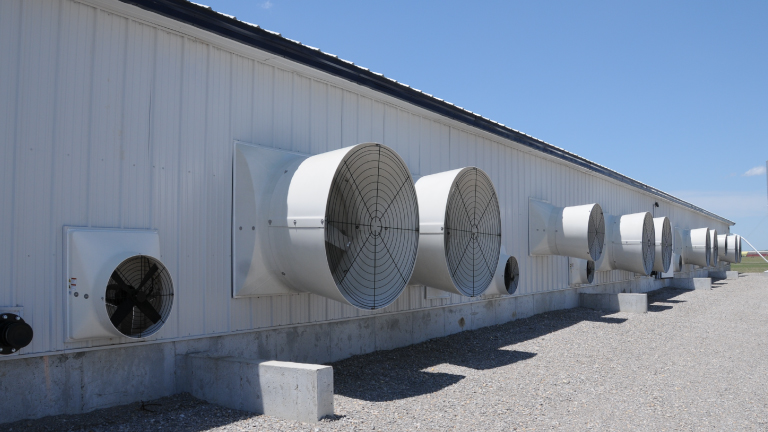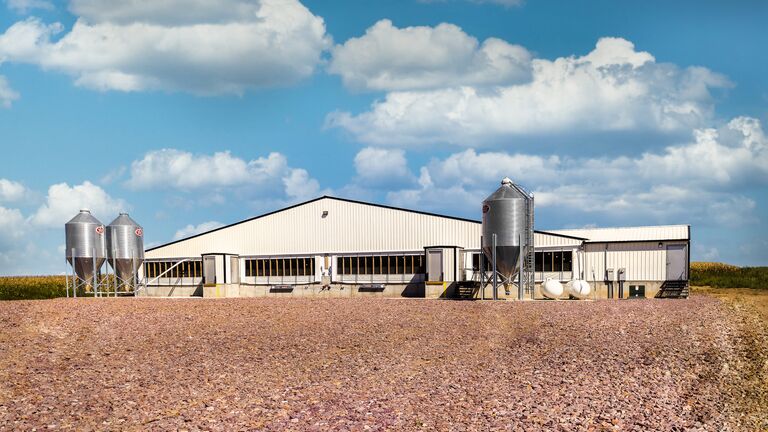Aaron Wilson has been around hogs most of his life. Growing up, he helped out after school on his family’s 1,000-head finishing operation. Following high school, he worked at a local farm during the day and trucked pigs to local processing plants at night. He soon started his own corn and soybean farm and field tiling business.
“I didn’t have any ground at the time, but I knew I wanted to eventually build a swine barn of my own,” Wilson recalled.
It took three-and-a-half years, which included addressing regulatory and financial issues, but the 27-year-old entrepreneur finally realized his dream in September 2020, when he opened his own wean-to-finish facility in Wilkinson, Indiana. The new operation has an H design consisting of two connected barns, each with a capacity of 2,480 market-size pigs.
The operation was designed and installed by a local AP dealer, QC Supply, Inc., and equipped with the latest technologies based on criteria from Wilson’s integrator, JBS Foods. Features include:
- A 7-foot-wide “fast alley” pathway for transitioning pigs instead of a tightly confined area that can adversely affect animal health. The fast alley is used for both pre-sorting animals for market shipment as well as creating the loading pathway for easy, non-constricted movement.
- A 5-foot-wide textured hallway that connects the two barns. The hallway ceiling features double-stamped texturing at the loading chute and 45-degree-angle instead of 90-degree-angle turns for more comfortable movement.
- Three bulk bins per building, tied in tandem, to support feed storage growth and for budgeting multiple rations to match the growth curve of the animals. A unique feature on incoming feed is the recessed ceiling to protect employees from injuries and facilitate maintenance.
- Smart IR Feed Sensor-controlled feeders that utilize infrared sensors to dispense the correct level of feed required for young pigs. There are no moving parts or sensitivity adjustments, and the sensors are not affected by changes in temperature, humidity, moisture content or feed type.
- Six outside variable speed pit fans, which are the first stage of minimum ventilation, to prevent ammonia from entering the building. The quick-attach fan-mounting hardware allows the fan to be removed quickly and easily for regular cleaning and keeps fans operating at peak performance.
- An interior fan bank consisting of six 54-inch and two 36-inch Commander fans. A unique feature is that they can be operated at three different settings — power, natural ventilation and tunnel — depending on air flow needs. “One of the biggest benefits is not getting too much air on the pigs and maintaining the right amount of ventilation,” Wilson said. “It really helps to keep them healthy.”
SWINE BARN UPGRADES TO ADDRESS EFFICIENCY, REGULATORY NEEDS
Mike Garner, who works in QC Supply product sales, noted that sophisticated ventilation and environment controls not only promote animal health, but also affect energy efficiency. “In the JBS design specifications for this new facility, one of the major objectives was to avoid overusing energy,” he said. “Besides lowering operating costs, this contributes to the important goal of reducing our nation’s carbon footprint to help protect the climate.”
Advance controller technology
Wilson is also impressed with the operation’s EDGE controller, a single platform which controls all of the climate and feeding requirements for both barns. The controller is also linked to the AP weather station, which maximizes energy-efficient natural ventilation by monitoring wind direction, wind speed and rain to inform the controller of the outside environment.
NEW SMART TOOLS ARE GAME CHANGERS FOR SWINE OPERATIONS
EDGE also allows remote access via any web-enabled device, so Wilson can monitor and analyze data in real time or quickly respond to issues. That means freedom to leave the farm and knowing that if a problem should occur, an alarm will be triggered and he will be immediately notified via text message or email, saving valuable time and money.
That’s a big plus when he not only has the hog operation to manage, but also his row crop farm and tile business. “I really like being able to get on my phone any time and see what’s going on,” he said.
Looking ahead, Wilson said expansion might be a future possibility. “If things keep going well, I could see building another hog farm like this one someday.”

